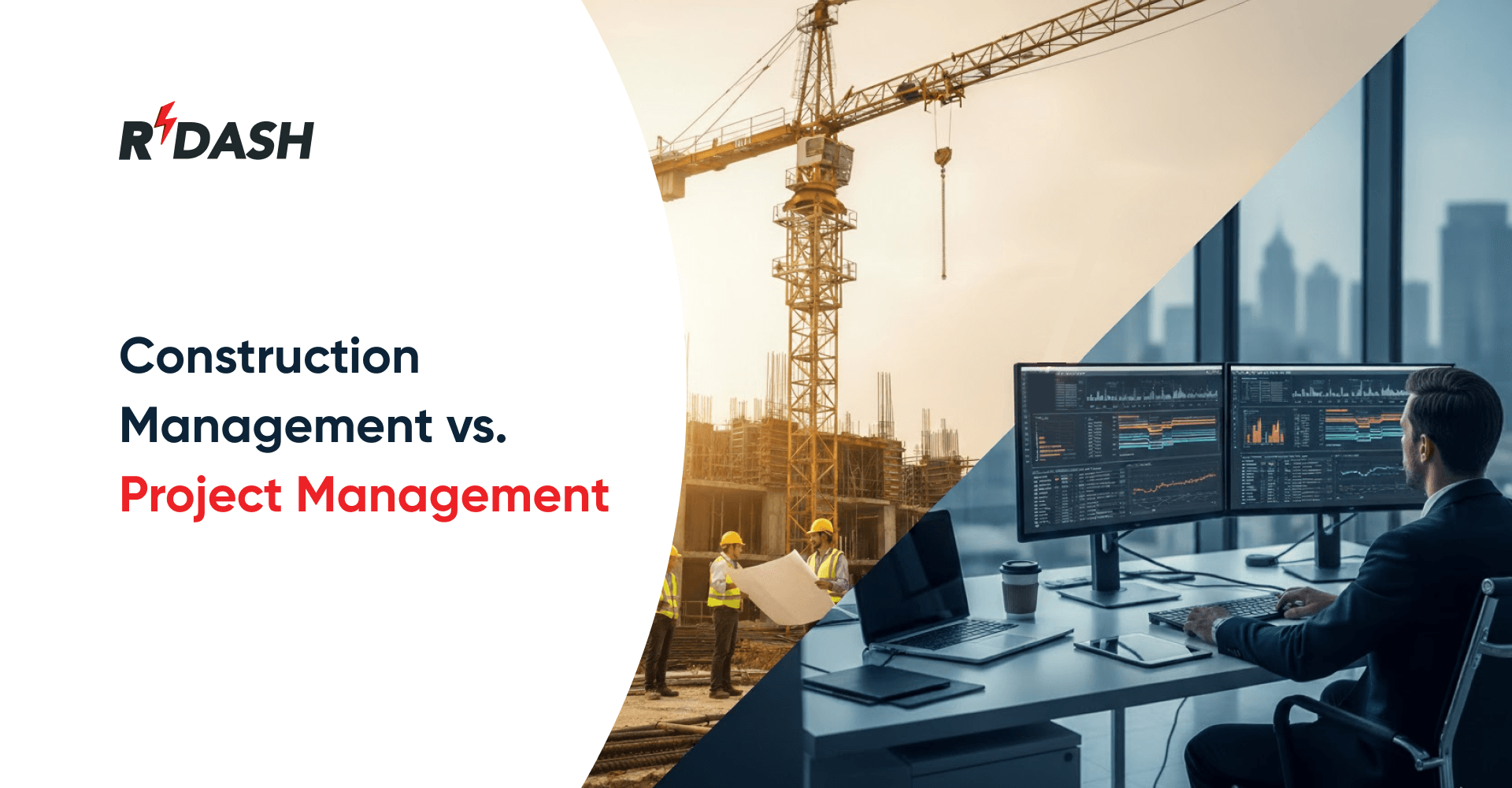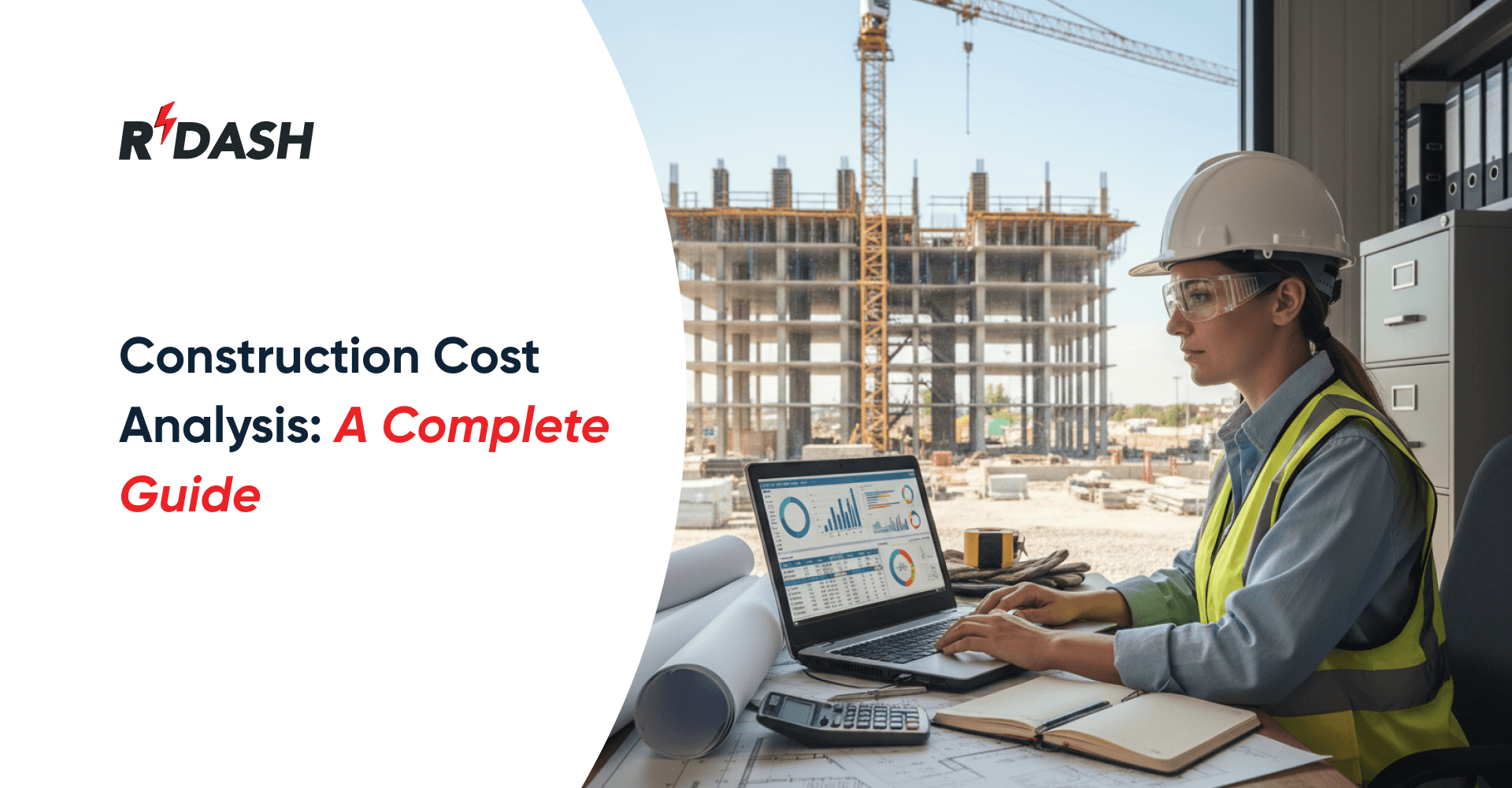Construction projects, no matter the size, rely on effective communication. If you’re new to construction, the industry can seem overwhelming with all the technical jargon. Understanding the basic terms can save you time, money, and a lot of frustration. This comprehensive glossary is designed to enhance your professional vocabulary and ensure your projects run smoothly.
Most common construction terms you must know:
Addendum
An addendum is an official document added to the original contract or construction plans, typically when changes or modifications need to be made after the initial agreement. It ensures that any updates, corrections, or additions are formally acknowledged. Addendums help maintain clarity and ensure that all stakeholders are aware of project adjustments. It’s a crucial part of managing dynamic construction projects.
Agile Project Management
Agile project management emphasizes flexibility, collaboration, and iterative progress, making it ideal for construction projects that face frequent changes. Teams break down large projects into smaller tasks, allowing for quick adjustments based on ongoing feedback. This approach helps enhance communication and ensures timely delivery of project phases. It’s particularly useful when the project scope isn’t fully defined from the start.
All-in-Rate
An all-in-rate is a comprehensive pricing structure that includes all labor, materials, overhead, and other costs in a single rate. It simplifies budgeting and ensures transparency in project pricing. All-in-rates are often used in contracts to avoid hidden fees and provide a clear understanding of project costs upfront.
Blueprints
Blueprints are detailed architectural and engineering drawings that serve as the visual roadmap for a construction project. These drawings provide crucial information such as measurements, materials used, and the overall layout. Traditionally printed on blue paper, modern blueprints are often digital. They guide contractors and workers, ensuring the structure is built according to specifications.
Budget at Completion (BAC)
Budget at Completion (BAC) is the total expected cost of a project when it is completed. It includes all estimated expenses such as labor, materials, and overheads. Tracking BAC helps project managers compare actual spending with the initial budget, ensuring the project remains financially viable.
Building Information Modeling (BIM)
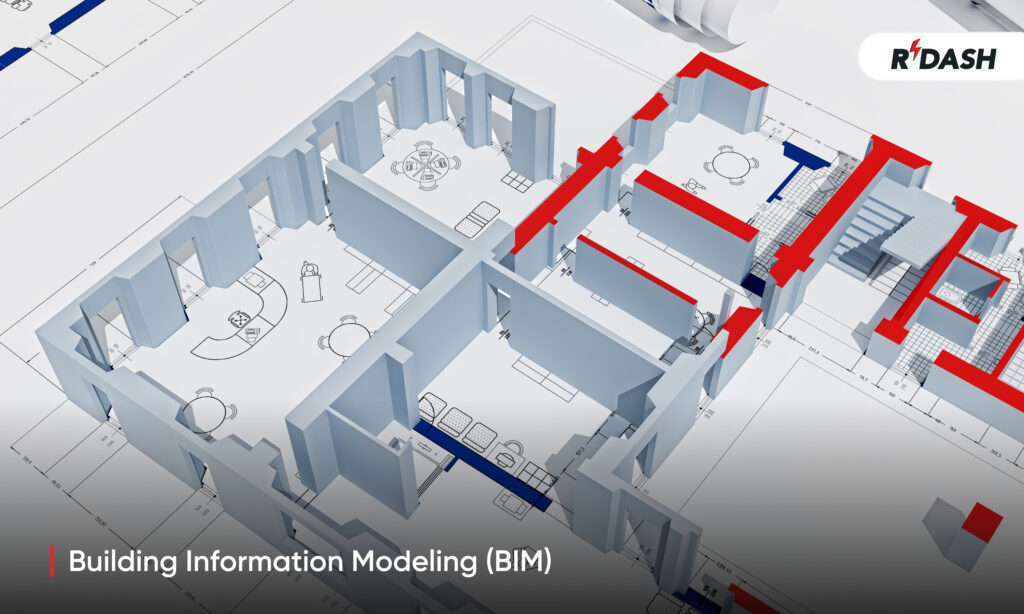
Building Information Modeling (BIM) is a digital tool that creates a detailed 3D model of a building, incorporating structural, mechanical, and even operational elements. This enhances collaboration among architects, engineers, and contractors. BIM helps visualize a project before construction begins, reducing the chances of errors and enhancing overall project efficiency.
Bid Selection
Bid selection is the process of evaluating and choosing the best contractor or supplier for a project based on submitted proposals. These bids often include cost estimates, timelines, and experience. A fair and transparent bid selection process is key to ensuring that the best candidate is chosen to complete the project within budget and on schedule.
Bid Solicitation
Bid solicitation involves inviting contractors or suppliers to submit bids for a particular project. This formal process usually includes specific project details, deadlines, and requirements. By gathering multiple bids, project owners can compare costs, timelines, and expertise to make an informed decision. Bid solicitation helps ensure competitive pricing and better project outcomes.
Bill of Quantities (BOQ)
A Bill of Quantities (BOQ) is a comprehensive document outlining all materials, labor, and additional costs needed for a construction project. It serves as a blueprint for budgeting and ensures that the contractor and client are on the same page regarding project costs. A thoroughly drafted BOQ aids in reducing disagreements and unforeseen costs.
Bill of Materials (BOM)
A Bill of Materials (BOM) outlines all the materials needed for a project, including quantities and specifications. It helps in planning the procurement process and ensures that the right materials are available when needed. This document is essential for effective project management, as it minimizes delays caused by material shortages.
Change Order
A change order is a formal request to alter the original contract or construction plan. This might include changes in scope, materials, or timelines. Change orders must be agreed upon by all parties before they can be implemented. Properly managing change orders is critical to avoiding project delays and keeping costs in check.
Construction Management at Risk (CMAR)
In Construction Management at Risk (CMAR), a construction manager is hired to oversee the project and ensure it stays within a guaranteed maximum price (GMP). This approach shifts some financial risk to the manager, incentivizing them to control costs and timelines more effectively. CMAR fosters collaboration and ensures accountability throughout the project.
Construction Estimate
A construction estimate is a detailed prediction of the costs involved in completing a project. It includes materials, labor, equipment, and other related expenses. Accurate estimates are crucial for budgeting and ensuring the project remains financially viable. Different estimation methods are used depending on the project phase.
Construction Drawings

Construction drawings are detailed blueprints that provide the instructions and specifications needed to build the project. These include architectural, structural, mechanical, and electrical plans. Contractors use construction drawings to ensure the project is built according to the design and complies with local regulations.
Cost-Plus Contract
In a cost-plus contract, the contractor is reimbursed for all project expenses, plus an additional fee for profit. This contract is ideal for projects where the full scope isn’t initially defined, offering flexibility but requiring close monitoring to prevent cost overruns. It provides transparency in spending but requires detailed record-keeping.
Core and Shell
Core and shell construction refers to completing only the essential structural elements of a building, like the foundation, exterior walls, and roof. The interior spaces remain unfinished, allowing future tenants to customize the interior to their needs. This method is common in commercial and industrial projects.
Cost Value Reconciliation (CVR)
Cost Value Reconciliation (CVR) is a financial tool used to compare project costs with the value generated at specific milestones. This helps track profitability and ensure that the project remains financially viable. Regular CVR reviews can highlight potential budget issues early, allowing for timely corrective actions.
Cost Management
Cost management is the process of planning and controlling a project’s budget from start to finish. This encompasses cost evaluation, budget management, and financial oversight. Proper cost management ensures that the project is completed within the agreed-upon financial limits, avoiding budget overruns and keeping stakeholders informed.
Critical Path Method (CPM)
The Critical Path Method (CPM) is a scheduling technique used to identify the longest sequence of tasks that must be completed for the project to finish on time. It helps project managers prioritize activities that directly affect the project timeline. By focusing on critical tasks, CPM ensures that deadlines are met efficiently.
Daily Progress Report (DPR)
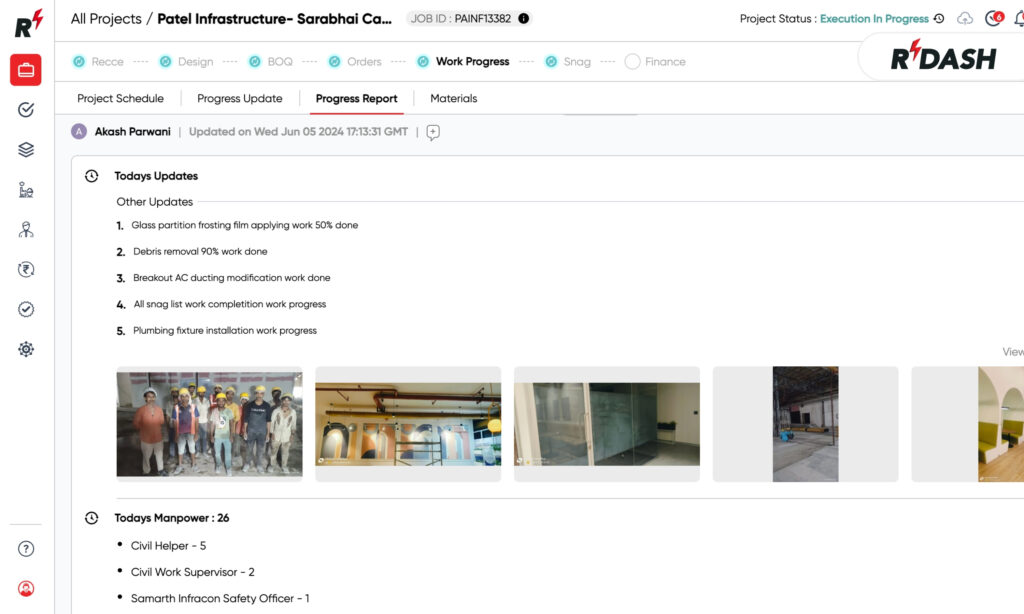
A Daily Progress Report (DPR) provides a snapshot of the construction activities and milestones achieved on a given day. It includes details like tasks completed, potential delays, and the resources used. DPRs are essential for keeping stakeholders informed and ensuring the project stays on schedule.
Earned Value Management (EVM)
Earned Value Management (EVM) is a project management technique used to measure project performance in relation to the budget and timeline. By integrating scope, cost, and schedule, EVM provides a comprehensive view of how a project is progressing. It helps detect variances early, allowing for timely corrective measures.
Floor Plan
A floor plan is a scaled diagram that shows the arrangement of rooms, doors, windows, and other features from a top-down perspective. It helps contractors and clients visualize the interior layout of a building. Floor plans are essential for construction planning and are often used during the design and approval stages.
General Contractor
A general contractor oversees the entire construction project, managing subcontractors, suppliers, and schedules. They ensure the project is finished on schedule, within the allocated budget, and meets the necessary quality benchmarks. General contractors typically serve as the main liaison between the project owner and the construction crew.
Gantt Charts
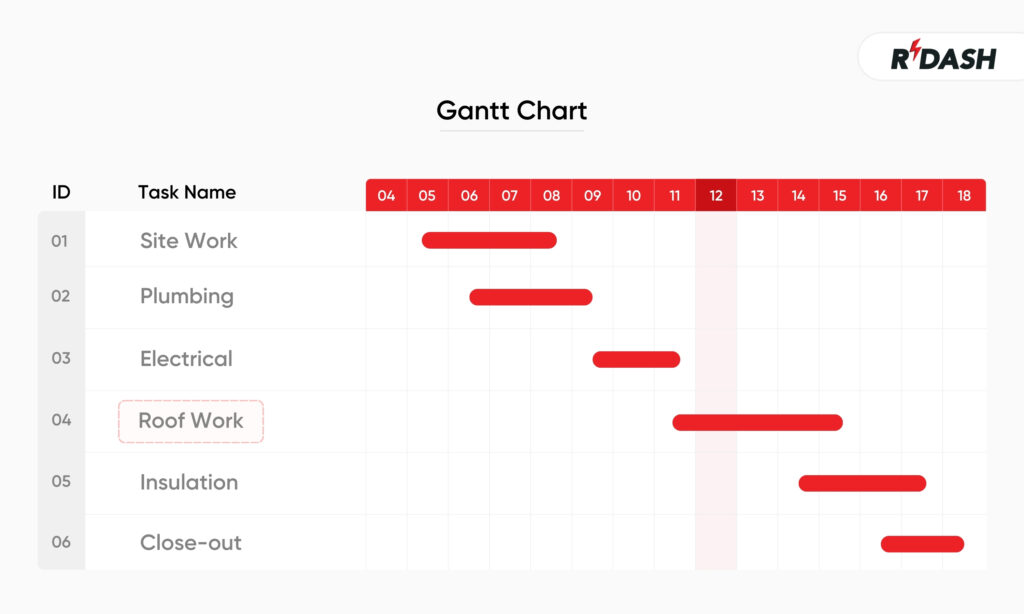
Gantt charts are visual tools that display project tasks along a timeline, showing when each task starts and ends. They help project managers track progress, identify potential delays, and ensure that tasks are completed on schedule. Gantt charts are widely used in construction to monitor project timelines.
Guaranteed Maximum Price (GMP)
A Guaranteed Maximum Price (GMP) contract sets a ceiling on the total cost of a construction project. The contractor is responsible for covering any additional expenses that exceed the agreed-upon limit. GMP contracts provide financial security for the client and incentivize contractors to manage costs effectively.
HVAC
HVAC stands for Heating, Ventilation, and Air Conditioning. These systems regulate temperature, air quality, and ventilation within buildings, ensuring comfort and safety. Proper HVAC design and installation are essential for energy efficiency and meeting building codes in residential and commercial projects.
Inspection
Inspection is the process of reviewing and evaluating the quality of work on a construction site. It ensures that the construction complies with building codes, safety standards, and project specifications. Regular inspections help maintain high-quality work and prevent costly rework later in the project.
Invitation for Bid (IFB)
An Invitation for Bid (IFB) is a formal document issued to contractors, inviting them to submit a proposal for a project. It includes the scope of work, specifications, and deadlines. The IFB ensures competitive pricing and helps project owners select the most qualified contractor for the job.
Integrated Project Delivery (IPD)
Integrated Project Delivery (IPD) is a collaborative approach where the project owner, architect, and contractor work together from the start. This method encourages open communication and reduces conflicts, leading to more efficient project execution. IPD aligns the goals of all stakeholders to ensure a successful outcome.
Jobsite Safety Plan
A Jobsite Safety Plan is a comprehensive document outlining safety protocols, potential hazards, and emergency procedures for a construction site. It ensures that workers follow best practices to prevent accidents and injuries. A well-implemented safety plan is essential for maintaining a safe working environment.
Lien
A lien is a legal right granted to a contractor or supplier to claim a property if they have not received payment for services rendered. It ensures that the contractor or supplier can seek compensation by placing a hold on the property until payment is made. Liens protect contractors and provide leverage in payment disputes.
Lean Construction
Lean construction is an approach that aims to reduce waste and increase value across the duration of the project. It borrows principles from lean manufacturing, such as continuous improvement and efficiency. Lean construction helps reduce costs, improve timelines, and deliver higher-quality outcomes by streamlining processes.
Lump Sum Contract
A lump sum contract is an agreement where the contractor agrees to complete the project for a fixed price. This type of contract is common when the project scope is clearly defined. It transfers most of the financial risk to the contractor, as they are responsible for covering any cost overruns.
Material Management
Material management is the process of sourcing, storing, and controlling materials for a construction project. It ensures that the right materials are available when needed, preventing delays and reducing waste. Effective material management is critical to keeping projects on schedule and within budget.
Notice of Completion (NOC)
A Notice of Completion (NOC) is a legal document that signifies the completion of a construction project. It is issued by the project owner to confirm that all work is finished, and it’s typically required to close out the project and release any remaining payments or liens.
Purchase Order (PO)
A purchase order (PO) is an official document issued by a buyer to a supplier, specifying the types of materials or services required. It details the quantities, costs, and delivery schedules. In construction, POs are crucial for timely material procurement, helping to avoid project delays and acting as legally binding agreements between the purchasing party and the supplier.
Project Stakeholder
A project stakeholder is anyone who has a vested interest or involvement in a construction project, which can include clients, contractors, investors, and regulatory bodies. Stakeholders can influence project decisions, and their needs must be balanced for the project to succeed. Effective communication with stakeholders is critical to managing expectations and achieving project goals.
Public-Private Partnership (PPP)
A Public-Private Partnership (PPP) is a collaboration between a government agency and a private-sector company to complete large infrastructure projects. In these arrangements, the private entity typically provides funding and expertise, while the government offers regulatory support. PPPs are used to fund and deliver public projects that might not be possible through public funding alone.
Project Costs
Project costs encompass all expenses related to the construction process, such as labor, materials, equipment, and indirect costs including permits and insurance. Keeping a close eye on these costs is vital to keep the budget on course. Effective management and forecasting of these expenses are key to preventing cost overruns and ensuring the project remains profitable.
Quality Control
Quality control is a system of procedures and inspections used to ensure that construction work meets the required standards and specifications. It includes regular testing of materials, inspections of completed work, and corrective actions if necessary. Maintaining quality control throughout the project helps prevent defects and ensures the final product meets the client’s expectations.
Request for Tender (RFT)
A Request for Tender (RFT) is a formal document issued to contractors, inviting them to submit bids for a construction project. The RFT outlines the scope, specifications, and conditions for the project, enabling contractors to prepare competitive proposals. It is a key step in the procurement process to ensure fair competition and transparency.
Recce
A recce, short for reconnaissance, refers to a preliminary survey of a construction site before work begins. The purpose is to assess site conditions, identify potential challenges, and plan logistics. Conducting a recce ensures that the site is suitable for the project and helps avoid unforeseen issues once construction is underway.
Request for Proposal (RFP)
A Request for Proposal (RFP) is a comprehensive document that invites contractors or service providers to submit proposals for a specific project. It outlines the project’s goals, schedule, and criteria, enabling contractors to offer detailed plans and pricing. RFPs are typically used when project owners need a thorough proposal and cost breakdown from potential service providers.
Request for Information (RFI)
A Request for Information (RFI) is issued by a contractor seeking clarifications about certain project details from the owner or architect. RFIs are essential for clarifying project specifications, avoiding misunderstandings, and ensuring the project progresses as planned. They are instrumental in preventing delays and maintaining the integrity of the project.
Request for Quote (RFQ)
A Request for Quote (RFQ) is utilized to solicit cost estimates from suppliers or contractors for specific goods or services required in a project. The RFQ typically includes details about the project needs and required quantities, allowing bidders to submit their quotes. Comparing RFQs helps project managers select suppliers based on cost and availability.
Subcontractor
A subcontractor is a specialized entity or individual hired by the main contractor to perform distinct parts of the work, such as electrical installations, plumbing, or HVAC systems. Subcontractors provide expertise in their specific fields and are crucial for completing various segments of the project under the main contractor’s oversight.
Scope of Work (SOW)
The Scope of Work (SOW) is a critical document that outlines the detailed tasks, expected deliverables, and timelines for a project. It serves to clearly define the responsibilities and expectations from the contractor and other involved entities, ensuring everyone understands their roles and the project’s requirements.
Schematic Design (SD)
Schematic design represents the initial stage of the design process, where preliminary drawings and layout concepts are developed to shape the project’s direction. This stage focuses on the overall concept, including building massing, floor plans, and spatial relationships. Schematic designs are typically presented to the client for feedback before moving into more detailed design stages.
Schedule of Rates (SOR)
A Schedule of Rates (SOR) provides a predetermined list of prices for specified tasks, materials, or labor, facilitating quick cost calculations for additional or altered work during a project. The SOR is commonly included in long-term contracts to provide consistent pricing for standard services or tasks throughout the project’s duration.
Site Plan
A site plan is a detailed layout of the entire construction site, including building locations, access points, utilities, and landscaping. It helps the construction team understand how the project fits into the surrounding environment. A site plan is often required for permits and approvals before construction can begin.
Stakeholder
A stakeholder in a construction project is anyone with an interest or investment in the outcome of the project. This can include the project owner, contractors, local authorities, and even the public. Stakeholders can influence project decisions, so managing their expectations and interests is a key part of successful project management.
Time and Material Contract
A time and material contract compensates contractors based on the actual time spent and materials used on a project. This type of contract is suitable for projects where the scope is not well-defined from the start, offering flexibility but requiring meticulous monitoring to manage expenses effectively.
Turnkey Project
A turnkey project is where the contractor delivers a fully operational facility to the client who needs only to ‘turn the key’ to start operations. This comprehensive approach is favored in large-scale projects where the contractor oversees all phases from design through completion.
Unit Price Contract
In a unit price contract, the contractor receives payment according to the quantity of work units completed, instead of a predetermined total price. This contract type is often used in projects where the full scope is not known at the start. It allows for flexibility but requires accurate measurement of completed units.
Value Engineering
Value engineering involves scrutinizing a project’s design to identify more cost-efficient methods to achieve similar or enhanced outcomes. The goal is to maximize value while minimizing costs without sacrificing quality. Value engineering often involves redesigning or substituting materials and methods to improve efficiency.
VIF (Verify in Field)
VIF stands for “Verify in Field,” meaning that specific dimensions or details must be checked on-site during the construction process. It’s used to ensure accuracy when actual conditions on the construction site might differ from those on the plans. Field verification is crucial in averting expensive mistakes.
Working Drawings
Working drawings are the detailed architectural or engineering plans that guide the construction team during the building process. They include specific measurements, materials, and instructions on how to execute each phase of the project. Working drawings ensure that the construction matches the design and meets all required specifications.
Work Order
A work order is a document that authorizes the completion of a specific task or set of tasks on a construction project. It provides details such as the nature of the work, timeline, and materials needed. Work orders are critical for tracking progress and ensuring accountability on construction sites.
Work Breakdown Structure (WBS)
A Work Breakdown Structure (WBS) is a project management tool that breaks down a large project into smaller, manageable tasks or phases. It helps project managers organize tasks, assign resources, and track progress. The WBS ensures that all aspects of the project are accounted for and executed efficiently.
Zoning
Zoning refers to regulations set by local governments that dictate how land can be used in specific areas. These laws separate residential, commercial, and industrial areas to ensure organized and sustainable urban development. Zoning impacts construction projects by determining what types of buildings can be constructed in a particular area.
In conclusion, mastering these 60 construction terms is crucial for anyone involved in the field, whether you’re starting out or looking to refine your professional vocabulary. Understanding this terminology is not just about enhancing communication on the job; it also enriches your understanding of the industry’s standards and practices, making you a more competent and knowledgeable professional.
For those eager to expand their knowledge further, a more detailed exploration of each term is available. Visit our comprehensive glossary where you can dive deeper into the vast lexicon of construction terminology. This resource is designed to help you stay informed and ahead in your field, ensuring you’re well-equipped to tackle any project with confidence and expertise.




